Digital Agriculture
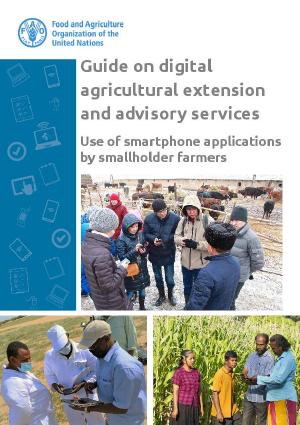
Guide on digital agricultural extension and advisory services
01/03/2023
Digital agricultural extension and advisory services (AEAS) have a great potential to enhance accessibility, delivery, transparency, scope and impacts of information and services for smallholder farmers. However, this potential is often unfully harnessed and the benefits of digital AEAS unequally distributed due to an evident, widening digital divide between rural and urban areas, gender, and different social groups both within and among regions.
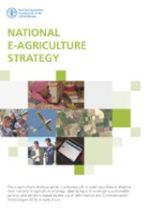
National e-agriculture strategy
01/01/2017
The e-agriculture strategy guide is a framework to assist countries in shaping their national e-agriculture strategy and identifying and developing sustainable services and solutions based on the use of Information and Communication Technologies (ICTs) in agriculture. 2017, 4 p.
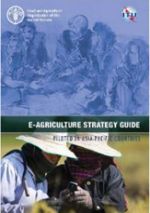
E-AGRICULTURE STRATEGY GUIDE: Piloted in Asia-Pacific countries
01/04/2016
This publication provides a framework for countries in developing their national e-agriculture strategies. These strategies would include an e-agriculture vision, an action plan, and a framework by which results can be monitored and evaluated. Like all strategies and plans, the outcomes of these processes are not static and changes in a country’s strategic context will require a dynamic approach to updating the strategy so that it remains relevant. 2016, 220 p.
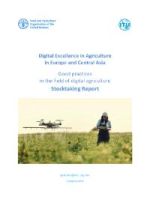
Good practices in the field of digital agriculture - Stocktaking report
01/07/2021
This Stocktaking Report provides a compilation of the 171 eligible good practices and solutions received from applicants, as well as a mapping of the digital agriculture landscape in Europe and Central Asia. The introductory section describes the Digital Excellence in Agriculture regional contest. The second part provides a compilation of the good practices and transformative solutions collected through the open call. 2021, 197 p.
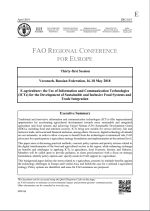
ERC/18/3
01/04/2018
This paper aims at discussing practical methods, concrete policy options and priority actions related to the digital transformation of the food and agricultural sectors in the region, while enhancing exchange on benefits and challenges in applying ICTs in agriculture, food livestock, forestry and fisheries. Policy options are identified, and areas for FAO assistance are proposed. 2018, 12 p.
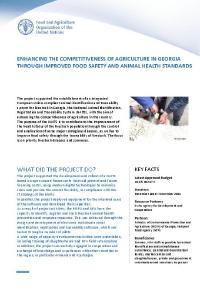
Enhancing the Competitiveness of Agriculture in Georgia through Improved Food Safety and Animal Health Standards - GCP/GEO/009/SWI
01/06/2022
The project supported the development and rollout of a NAITS based on open source frameworks (to avoid present and future licensing costs), using modern digital technologies to minimize costs and provide the utmost flexibility, in compliance with the IT strategy of the MEPA. In parallel, the project deployed equipment for the intended users of the software and developed their capacities.

Digitalization of the food control system to measure food safety in Georgia
01/01/2024
Effective data collection during food control procedures by the public authorities is essential to ensure food safety and compliance with regulations. Using modern technology plays a vital role in acquiring information from food businesses, food control inspections, and other food control actions.
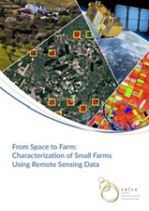
From Space to Farm: Characterization of Small Farms Using Remote Sensing Data
01/06/2021
This publication describes the analytical process carried out under the European Union-funded SALSA project which enabled the development of a European map of the distribution of small farms at the NUTS-3 level and assessed the capabilities and usefulness of Copernicus Sentinel-1 and Sentinel-2 satellites for small farms monitoring, specifically in providing information about crop types, crop area extent and crop production. 2021, 44 p.
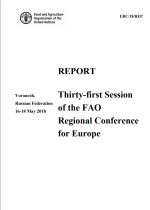
Report of the Thirty-first Session of the FAO Regional Conference for Europe
01/05/2018
The 31st session of the FAO Regional Conference for Europe (ERC) was open to all FAO Members in the Europe and Central Asia region, to representatives of the United Nations Bodies and Specialized Agencies, and to selected Observers. The Conference included a Ministerial Roundtable on sustainable agriculture and food systems in Europe and Central Asia in a changing climate. A second major topic to be covered on the Conference’s opening day was E-agriculture. 2018, 21 p.
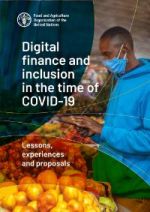
Lessons, experiences and proposals
01/01/2021
This working paper has two main objectives: To provide a comprehensive overview of how the COVID-19 pandemic has been impacting on the digital financial ecosystems of low- and-middle income countries; and, to showcase how digital financial services have been used. 2021, 94 p.
